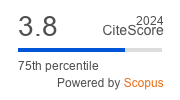Article | Open Access
Interactions Between Pedestrians and Street Vendors: Experiences From the Global North and South
| Views: | 6318 | | | Downloads: | 4959 |
Abstract: Street vending evokes contrasting images of urban vibrancy and congestion. This comparative study explores the dynamics between street vendors and pedestrians in the Global North and South through four case studies—two in Brisbane, Australia, representing the North, and two in Nagpur, India, representing the South. Employing Kelum Palipane’s sensory rhythms diagram, this research examines the sensory experiences—sight, sound, touch, smell, movement, taste—in urban environments where street vending is present. Findings reveal notable disparities in pedestrian activity. However, street vendors in all contexts influence pedestrian behaviour through common sensory cues. Brisbane represents a case where more street vending is encouraged, albeit under strict regulations. Here, further initiatives are needed to inject vitality into urban spaces. In contrast, Nagpur exemplifies India’s rich street vending culture. In this context, street vending is positive in many ways but also presents challenges such as congestion, safety, and accessibility. Despite these differences, street vendors in both cities play a crucial role in enhancing the urban experience. The research highlights the need for balanced planning strategies that promote urban vibrancy while mitigating any adverse impacts of street vending on pedestrians.
Keywords: pedestrian behaviour; sensory rhythms diagram; street vending; urban vibrancy
Published:
© Ankita Patil, Dorina Pojani, Iderlina Mateo-Babiano, Thirafi Amani. This is an open access article distributed under the terms of the Creative Commons Attribution 4.0 license (http://creativecommons.org/licenses/by/4.0), which permits any use, distribution, and reproduction of the work without further permission provided the original author(s) and source are credited.


